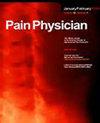介入性疼痛管理中的医生报酬改革:平衡成本、质量、可及性和独立实践的生存。
摘要
2025年7月14日,医疗保险和医疗补助服务中心(CMS)发布了2026年医生建议支付规则,旨在减少浪费的支出,加强质量措施,改善慢性病管理,并保护独立实践免受系统性财务压力的影响,这些压力有利于大型医疗保健系统并困扰独立实践。这些目标是令人钦佩的,但提议的基于效率调整将医生薪酬统一削减2.5%的措施适用于所有医生。此外,本应适用于医院医生的执业费用(PE)减少了4%至6%,却无意中适用于在门诊手术中心(ASCs)和医院提供服务的独立医生,这些独立医生占医生劳动力的43%。因此,基于效率调整的工作相对价值单位(wRVU)减少2.5%,PE减少4%至6%,总减少7%至9%,通过给独立医生施加额外压力来妥协和限制患者护理。此外,CMS建议启动涉及介入性疼痛管理(IPM)和疼痛管理专业的腰痛门诊专科模型(ASM)。这些专科无法控制所产生的费用,因为绝大多数患者是慢性疼痛患者,由家庭医生、脊椎指压治疗师、物理治疗师、神经外科医生和其他人管理,导致在3年内报销减少9%,或增加3%,每年反复发生变化。该提案包括3.8%的转换系数(CF)付款更新和增加办公室服务的报销,包括评估、管理和程序。这些变化将使办公室服务的报销额增加8%至10%,但也使在办公室以外进行的所有程序的报销额减少7%至9%。这些建议提出的时候,非医师医疗保健提供者正在罢工,要求与通货膨胀挂钩的工资增长,具有讽刺意味的是,医生经历了反复的报销削减,偶尔停滞不前,导致2001年至2025年总体减少33%,而介入疼痛医生的报销减少了41%。此外,从2011年到2031年,每年都有2%的自动减支,从明年开始,可能会有4%的现收现付减支。此外,这些年来,供应成本增加了56%至80%。此外,尽管电子病历和人工智能等技术取得了进步,但行政负担非但没有改善,反而加剧了。独立医生与复杂的事先授权、不断发展的医疗保险覆盖政策、越来越多的文件和来自所有付款人来源的合规性要求的审计风险不断增加、30%的介入疼痛医生随时都在接受审计。我们关于介入性疼痛医生的数据和关于其他医生的公开数据表明,效率下降了,pe飙升了。具有讽刺意味的是,CMS在2025年1月10日提议,将医疗保险优势计划的支付增加4.3%,到2026年将达到210亿美元。为了火上浇油,CMS于2025年4月7日发布了2025年至2026年平均增长5.06%的最终规定。这些提议是在人们越来越担心医疗保险优势支付的情况下提出的,其中包括440亿美元的优惠选择,400亿美元的风险调整差异,以及150亿美元的重复覆盖已经通过退伍军人管理局(VA)获得福利的退伍军人。此外,根据医疗保险支付咨询委员会(MedPAC)的数据,传统的医疗保险受益人也面临着更高的成本,每年额外支付198美元,总计约为130亿美元。所有这些加在一起,CMS每年在医疗保险优势上的支出超过1100亿美元。因此,随着独立执业不断受到攻击,美国介入疼痛医师协会(ASIPP)和其他协会敦促CMS为独立疼痛医师创建一个单独的标识符,以区分他们与医院的医生,并防止这些削减损害独立执业。这种独立但平等对待独立医生的做法最终会干扰病人的护理。On July 14, 2025, the Centers for Medicare and Medicaid Services (CMS) released the 2026 Physician Proposed Payment Rule aimed at reducing wasteful spending, enhancing quality measures, improving chronic disease management, and protecting independent practices from systemic financial pressures that have favored large healthcare systems and plagued independent practices. The goals are admirable, but the proposed measures with uniform reductions of 2.5% in physician payments based on efficiency adjustments apply across the board to all physicians. Further, practice expense (PE) reductions of 4% to 6%, meant to apply for hospital-based physicians will inadvertently apply to independent physicians constituting 43% of the physician workforce providing services in ambulatory surgery centers (ASCs), as well as hospitals. Thus, reductions of work relative value unit (wRVU) based on efficiency adjustment of 2.5% and PE reductions of 4% to 6%, with total reductions of 7% to 9%, compromise and limit patient care by putting additional pressure on independent physicians. Further, CMS' proposal to start Ambulatory Specialty Model (ASM) for low back pain with specialties of interventional pain management (IPM) and pain management involved. These specialties have no control over costs incurred as an overwhelming majority of patients are chronic pain patients and managed by family physicians, chiropractors, physical therapists, neurosurgeons, and others, resulting in 9% reductions, or increase in reimbursement over a period of 3 years with recurring changes of 3% each year.The proposal includes a 3.8% conversion factor (CF) payment update and increased reimbursement for office-based services, including evaluation, management, and procedures. The changes will increase reimbursement by 8% to 10% for office-based services, but they also decrease reimbursement for all procedures performed outside offices by 7% to 9%. These proposals arrive at a time when non-physician health care providers are striking for wage increase tied to inflation, and ironically, physicians have experienced repeated cuts in reimbursement with occasional stagnation, leading to 33% reduction from 2001 to 2025 in general, and 41% reductions in reimbursement for interventional pain physicians. In addition, there is an additional 2% sequester cut each year from 2011 to last until 2031, and there is a potential for 4% PAYGO cuts starting next year. Further, supply costs have increased 56% to 80% during these years. Further, despite technological advancements such as EMRs and AI, administrative burdens have intensified rather than improved. Independent physicians contend with complex prior authorizations, evolving Medicare coverage policies, growing audit risk with increased documentation and compliance demands from all payers' sources, 30% of interventional pain physicians under audit at any time. Our data on interventional pain physicians and published data on other physicians shows that efficiency has decreased and PEs have been skyrocketing.Ironically, CMS has proposed on January 10, 2025, a 4.3% payment increase to Medicare Advantage Plans, amounting to $21 billion in 2026. To add fuel to the fire, CMS on April 7, 2025, issued a final rule of increasing on average by 5.06% from 2025 to 2026. These proposals come amid growing concerns about Medicare Advantage over payments, including $44 billion due to favorable selection, $40 billion from risk adjustment discrepancies, and $15 billion for duplicative coverage of veterans who already receive benefits through the Veterans Administration (VA). In addition, according to the Medicare Payment Advisory Commission (MedPAC), traditional Medicare beneficiaries also face higher costs, contributing an additional $198 annually, totaling roughly $13 billion per year. All of these added together, CMS is spending on Medicare Advantage over $110 billion a year.Thus, as independent practice continues to come under assault, the American Society of Interventional Pain Physicians (ASIPP) and other societies urge CMS to create a separate identifier for independent pain physicians to distinguish them from hospital-based physicians and prevent these cuts from harming independent practices. This separate but equal treatment of independent physician practices ultimately interferes with patient care.

 求助内容:
求助内容: 应助结果提醒方式:
应助结果提醒方式:


